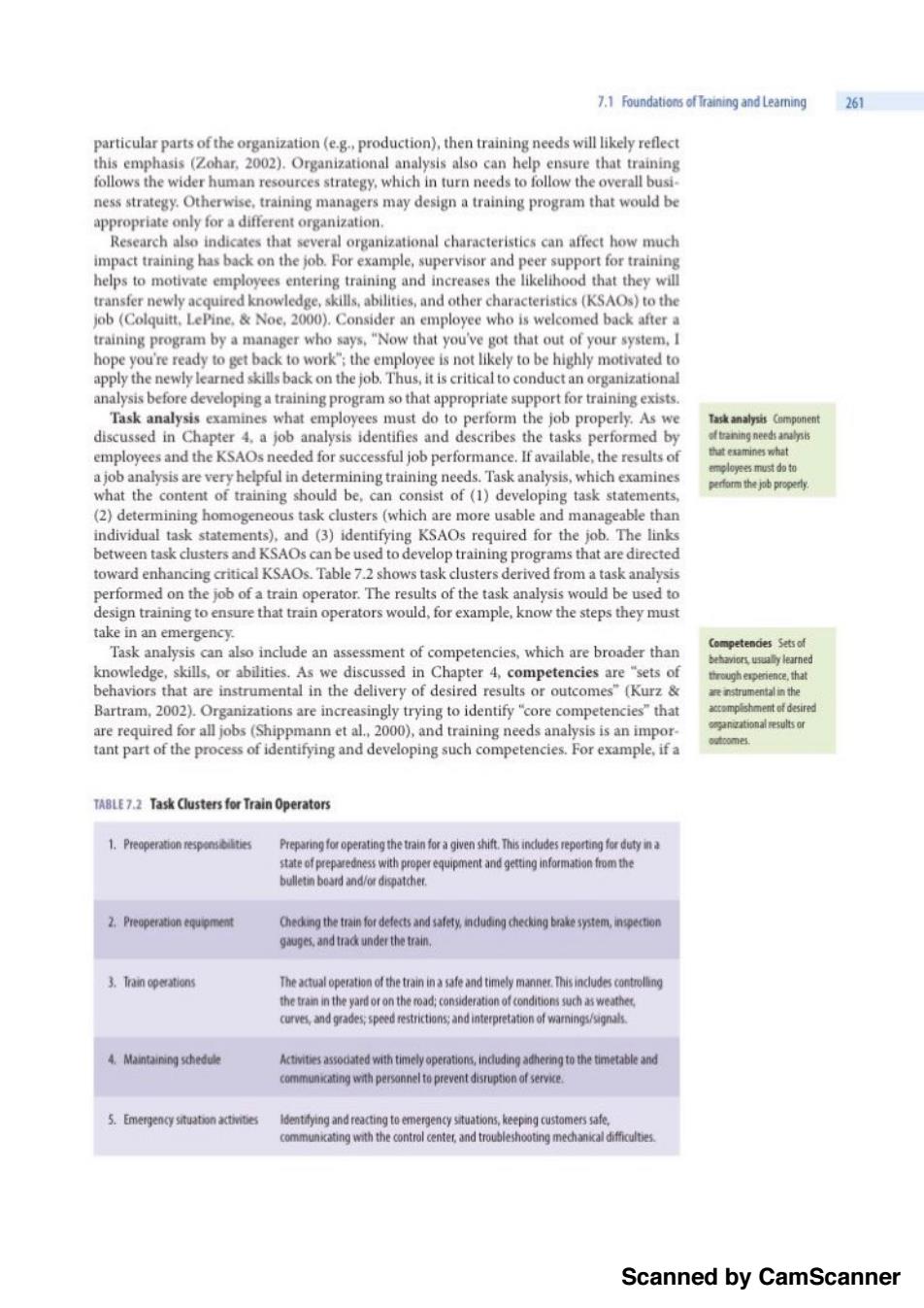正在加载图片...

7.1 Foundations of Training and Leamning 261 particular parts of the organization (e.g.,production),then training needs will likely reflect this emphasis (Zohar,2002).Organizational analysis also can help ensure that training follows the wider human resources strategy,which in turn needs to follow the overall busi- ness strategy.Otherwise,training managers may design a training program that would be appropriate only for a different organization. Research also indicates that several organizational characteristics can affect how much impact training has back on the job.For example,supervisor and peer support for training helps to motivate employees entering training and increases the likelihood that they will transfer newly acquired knowledge,skills,abilities,and other characteristics(KSAOs)to the job (Colquitt.LePine,Noe,2000).Consider an employee who is welcomed back after a training program by a manager who says,"Now that you've got that out of your system.I hope you're ready to get back to work";the employee is not likely to be highly motivated to apply the newly learned skills back on the job.Thus,it is critical to conduct an organizational analysis before developing a training program so that appropriate support for training exists. Task analysis examines what employees must do to perform the job properly.As we Task analysi(amponent discussed in Chapter 4.a job analysis identifies and describes the tasks performed by ftramning needs analysis employees and the KSAOs needed for successful job performance.If available,the results of h过examines what a job analysis are very helpful in determining training needs.Task analysis,which examines go5各mu时eo what the content of training should be,can consist of(1)developing task statements, (2)determining homogeneous task clusters (which are more usable and manageable than individual task statements),and (3)identifying KSAOs required for the job.The links between task clusters and KSAOs can be used to develop training programs that are directed toward enhancing critical KSAOs.Table 7.2 shows task clusters derived from a task analysis performed on the job of a train operator.The results of the task analysis would be used to design training to ensure that train operators would,for example,know the steps they must take in an emergency. Competences Sets of Task analysis can also include an assessment of competencies,which are broader than behaviors usua与ylearned knowledge,skills,or abilities.As we discussed in Chapter 4,competencies are "sets of through experience,that behaviors that are instrumental in the delivery of desired results or outcomes"(Kurz 经nstrumental in the Bartram,2002).Organizations are increasingly trying to identify "core competencies"that mshment f desired are required for all jobs(Shippmann et al.,2000),and training needs analysis is an impor- 网学national esults鲜 tant part of the process of identifying and developing such competencies.For example,if a TABLE 7.2 Task Clusters for Train Operators 1.Preoperation respensbilities Preparing for operating the train for a given shift.This indudes reporting for duty in a statefprepareness with properequipment and gettng informatiomthe bulletin board and/or dispatcher. 2.Preoperation equipment Cheding the train for defects and safety induding checkuing brake system.inspection gauges and track under the train. 3.Train operations The actual operation of the train in a safe and timely manner.This includes controlling the tramn in the yard or on the road:consideration of conditions such as weathe curves and grades:speed restrictions:and interpretation of warings/signals. 4.Maintaining schedule Activities assodated with timely operations,incuding adhering to the timetable and communicating with personnel to prevent disruption of service. 5.Emergency situation dentying and reactngteemergency situations,keeping customers safe. communicating with the control center,and troubleshooting mechanical difficulties. Scanned by CamScannerScanned by CamScanner